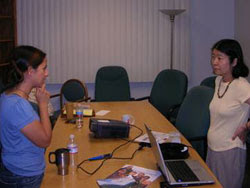Just heard about a
documentary about the environmental implications of human population growth (and
also some of the claims of ecofeminism we previously discussed) called “Mother:
Caring for 7 Billion” that seemed oddly relevant to our discussion in class
this past week and thought some people might be interested in checking it out!
I
haven’t seen the film, but they have a trailer on the site (and I think the
whole film can be watched for $0.99 for the rest of International Women’s
Month) if anyone’s interested:
http://motherthefilm.com/ .
The description (from their
Facebook page) is:
"Mother is a must-see film on why population growth
still matters and what is hindering action to reduce it." -Hania Zlotnik
Director of Population Division, United Nations
Mother: Caring for 7 Billion is an environmental documentary
that looks at the implications of our earth's increasing population and the
effect it has on our planet socially and environmentally. Through interviews
with experts in the field of environmentalism, social science, economics, human
rights and the main character, who is a mother and activist herself, the film
strives not to blame but to educate and to highlight a different path for humanity.
Mother, the film, breaks a 40-year taboo by bringing to light
an issue that silently fuels our most pressing environmental, humanitarian and
social crises - population growth.
Since the 1960s the world population has nearly doubled, adding more than 3
billion people. At the same time, talking about population has become
politically incorrect because of the sensitivity of the issues surrounding the topic– religion, economics, family planning
and gender inequality. Yet it is an issue we cannot afford to ignore.
Grounded in the theories of social scientist Riane Eisler,
the film strives not to blame but to educate, to highlight a different path for
humanity. Overpopulation is merely a symptom of an even larger problem - a
"domination system" that for most of human history has glorified the
domination of man over nature, man over child and man over woman. To break this
pattern, the film demonstrates that we must change our conquering mindset into
a nurturing one. And the first step is to raise the status of women worldwide.
Mother: Caring for 7 Billion, features
world-renown experts and scientists including biologist Paul Ehrlich, author of
“The Population Bomb,” economist Mathis Wackernagel, the creator of the
ground-breaking Footprint Network, Lester Brown, founder of the Worldwatch
Institute, and founder and president of the Earth Policy Institute, Malcolm
Potts, a pioneer in human reproductive health, and Riane Eisler, whose book “The
Chalice and the Blade” has been published in 23 countries.




























